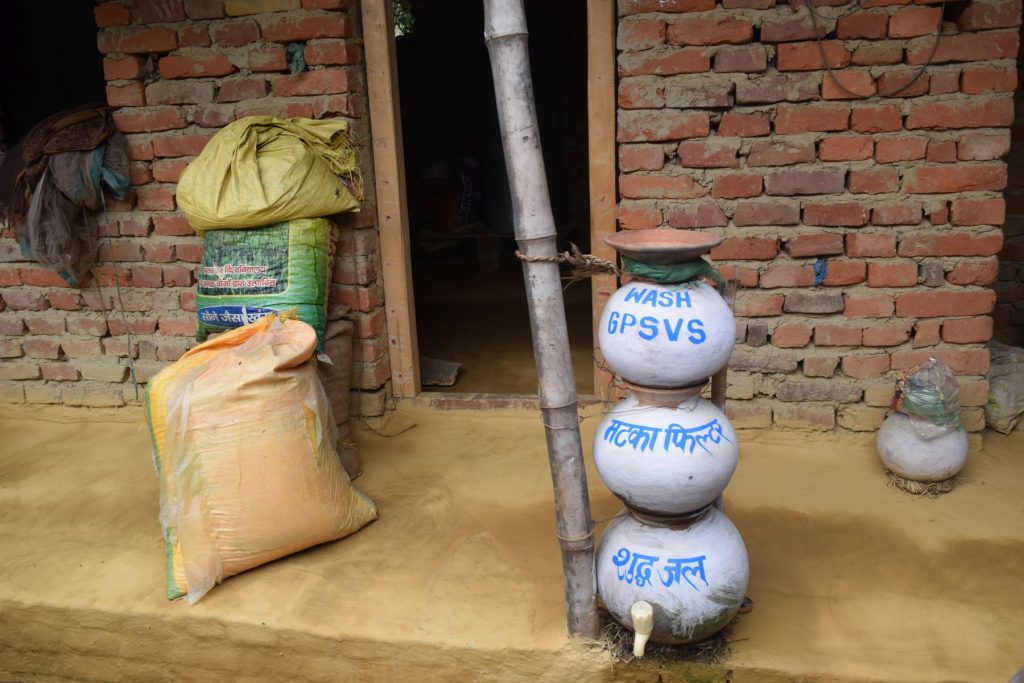When GPSVS started intervention in this village through IWRM project first they formed the (VDC) Village Development committee in September 2011 with 17 members (9 Female and 8 Male members).
This VDC conducted PRA Exercises to identify the water related problems and they prepared a (WUMP) water use master plan. This plan was submitted in the gram Sabha and was approved for implementation.
Meanwhile GPSVS trained the Volunteers on Water testing and they have tested all 76 Hand Pumps and it was observed all the hand pump’s water was high iron contaminated. This water testing report shared with Villagers by the VDC in February 2012. And they also shared different options to combat the situation such as Matka filter (Pitcher filter), temporary rain water harvesting, Permanent rain water harvesting for the taking safe drinking water. At initial stage people did not believed. They did some demonstration of Matka filter water and had shown the differences. In this process they had used the Guva leaves as an indicator which changes the hand pump water into pink color due to its high iron content and while same water passed through the Matka filter no colour change observed indicating the iron removal.
After this training, first VDC president Bhola Prasad Yadav Installed the Matka filter and Now 35 families installed it and getting safe drinking water @ 25 liter per day per family. 31 families installed temporary rainwater harvesting (tarpaulin sheet) and collecting rain water during monsoon period and using it for drinking purposes as the contamination level is highest during the monsoon period. Another 42 families taking rain water from the Permanent rain water harvesting (2000 lit) structure created at the village. 23 families are getting benefits from the renovated dug well. And 302 families are benefited from raised hand pumps. So all together 434 out of 589 households or say 74% of the total household of the village are getting safe drinking water. These families on an average saved INR 400 per month per family due to use of safe drinking water which otherwise has to spend on medicine .
Apart from these less water based crop sowing method adopted by 49 farmers in the form of SRI, SWI and SVI with the help of organization and Government. Related photographs are given here.in the words of VDC now they have been able manage the water sources and they thanks to GPSVS and WHH to make availability of safe drinking water and less water based crop method.




